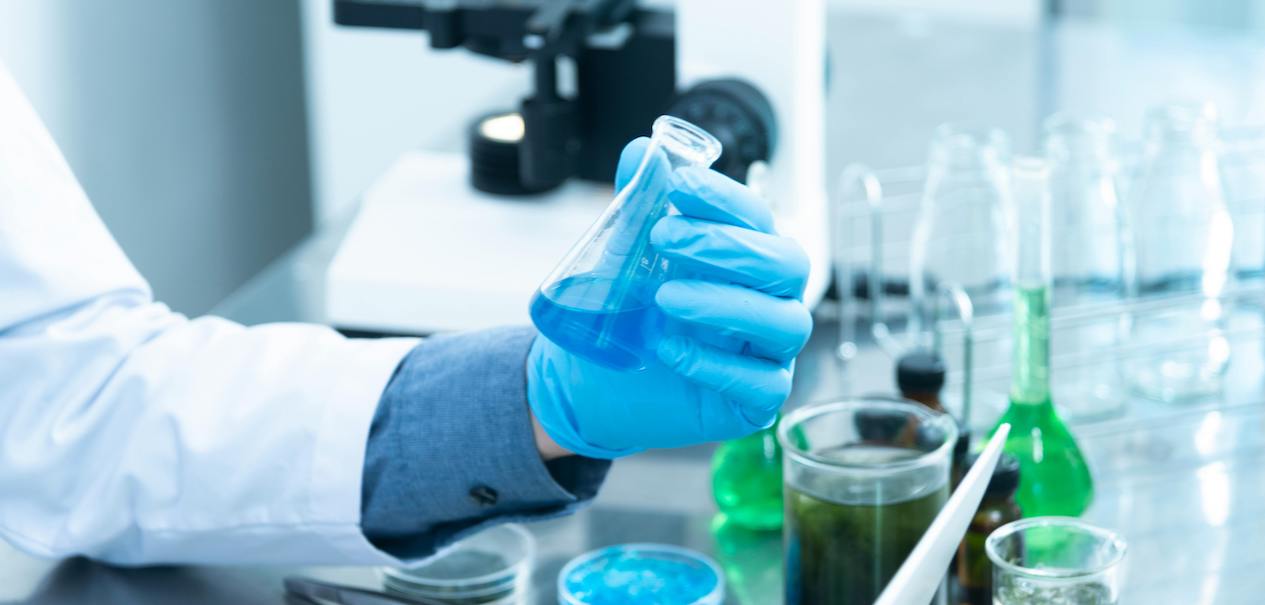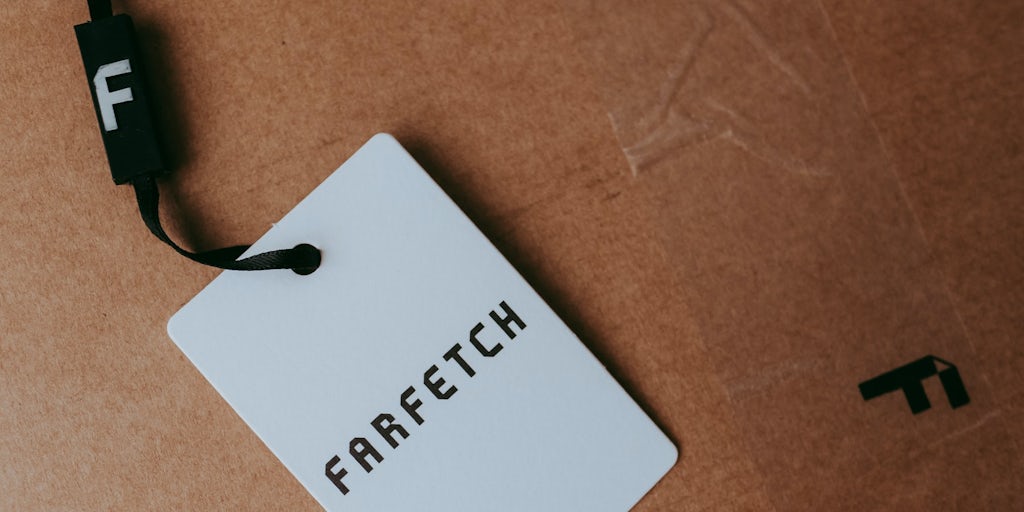Beauty & Wellness Briefing: Clinical results are beauty’s new battleground
This week, I examine the clinical claims arms race and its various motivations and players. Additionally, a mild week for executive moves but a busy week for the beauty industry nonetheless.
Including this month’s launches of Augustinus Bader’s body oil and Keys Soulcare’s Peptide Cream, every new product now comes with clinical-backed claims.
Product claims, expressed through clinical results and consumer testing, are currently a big talking point in the beauty industry. Historically, while shopping, a consumer could readily see basic results from a small-scale study — i.e., a survey — indicating that a certain percentage of people believed their skin was “more radiant” or “looked smoother” after using a product. But in looking at results now, there is a noticeable vibe shift to additional, scientific modalities for the more discerning customer.
For example, on the product page for Skinfix’s Barrier + Foaming Oil Hydrating Cleanser on Sephora.com, you will not only find qualitative consumer perception data but also results referencing a corneometer, which measures hydration. Meanwhile, Dieux’s Deliverance Antioxidant & Niacinamide Serum states the results of third-party product testers who used AI company BrighTex Bio-Photonics’ proprietary Clarity 3D imaging to measure decreases in their fine lines and wrinkles. Furthermore, Sunday Riley’s Good Genes serum mentions a profilometry analysis, referring to a technique that extracts topographical data from a surface. You may as well need a Ph.D. to shop at Sephora.
Obvious players feeding into the clinical claims arms race include “cleanical” skin-care brands trying to prove their efficacy. There are also supplement brands like Ritual and Nutrafol, which are trying to show that supplements can, in fact, work. But it’s also a competition for the rest of the skin-care category fighting for customer attention on the category’s crowded shelves. According to an Aug. 2023 Future of Wellness survey from McKinsey, 41% of consumers said they select products based on their clinically proven efficacy.
“There is a race around claims. If you go into stores, you cannot [capture customers] if you don’t have numerical claims; the [clinical efficacy] has to be higher than 80-85% to resonate and cut through the noise,” said Geraldine Jacquinot, U.K. marketing director for skin care at Shiseido Group. “Brands [in general] will have to find ways to bring more to the consumer [to drive them to purchase] like services and other offers besides the product, including beauty advisors and tailored consultations.”
However, in addition to drawing customers, there are other motivations underpinning the rise of clinical claims. A notable reason is to appeal to dermatologists and consumers post-treatment, whether the consumer has undergone cosmetic surgery, ablative or non-ablative laser facials, or aesthetic injectables. For example, in its first-ever dermatology partnership, in 2022, La Mer promoted the results from new studies on the reparative qualities of its Miracle Broth formula on the microbiome.
Another reason is to get a leg up on competitors using ingredients or materials of lesser quality. For example, Fiona Stewart, founder of Slip, which sells pillowcases touting beauty benefits, once called clinical testing a defensive tactic to combat competitors using cheap silk and satin. After all, if you charge $89 for a pillowcase, you better explain why it’s worth it. Brands that have long played in the clinical space, like Murad, have had to find extensions of the brand — in Murad’s case, wellness — to further differentiate themselves and solidify customer affinity.
Stat of the week:
On Friday, Galderma, the maker of Cetaphil skin care and Restylane aesthetic injectable, IPO’d on the Swiss Stock Exchange — ticker name “GALD.” Its prospectus showed interesting insight into the company. In 2023, Galderma generated record net sales of $4 billion, an 8.5% year-over-year growth on a constant currency basis. Its IPO share price on its debut was initially 53 francs ($59) but surged up 18%, making it one of the largest European IPOs this year. The prospectus revealed that 44% of Galderma sales come from the U.S., and 30% are from its dermatological skin-care division. The company’s other portfolio categories are injectables cosmetics and therapeutic dermatology. According to the prospectus, Galderma intends to use the capital infusion to pay down debt and “accelerate its organic growth momentum.”
Executive moves:
- La Prairie Group named Estelle Létang its CEO, effective April 1. For the past 21 years, she has worked at The Estée Lauder Companies, starting at Darphin. Since 2020, she has lived in Dubai, serving as the company’s gm of the Middle East zone.
- Maesa beauty incubator appointed Patricia Huet as its chief human resources officer. Before joining the company, she held HR leadership roles managing global initiatives for financial services, pharmaceutical and beauty companies, including Revlon and The Estée Lauder Companies.
- Borghese skin care appointed Dawn Hilarczyk as COO. Most recently, Dawn was a co-creator and head of global sales, e-commerce and business development at luxury skin-care brand Noble Panacea.
News to know:
- On March 22. K-beauty brand COSRX launched a new TikTok campaign called the #PatThePeptide challenge. The campaign aims to showcase and emphasize how COSRX’s popular product, The 6 Peptide Skin Booster Serum, has made skin care more accessible than ever.
- Anastasia Beverly Hills launches its latest product, a BB Cream in a stick form offering sheer-to-light coverage, on March 28.
- Earlier in March, Bulgari partnered with the Fashion Institute of Technology to host a design challenge for undergraduate and graduate students to create art for the packaging of Bulgari’s Allegra Baciami Eau de Parfum. This marked the first time Bulgari has collaborated with a higher education institution.
- Hydration brand Liquid I.V. announced a multi-year partnership with the Formula 1 Crypto.com Miami Grand Prix, making it the race’s first-ever functional hydration partner.
- Bala launched three-pound bangles on March 20. According to the brand, it was the brand’s most requested product to date. Six-year-old Bala has sold 2 million sets of Bala Bangles in one- and two-pound weight variations.
In the headlines:
Emily Weiss speaks. A TikTok ban worries beauty execs. Who would buy Rare Beauty? CJ Olive emerges as K-beauty’s biggest retail player. Sephora unveils two new sustainability seals. Off-White debuts beauty brand Paperwork. Fenty Beauty to launch in China in April.
Need a Glossy recap?
Ulta Beauty details its successful MUSE program. Unilever enlists Sofia Richie Grainge for Nexxus hair. Maesa launches an in-house AI training model. Shiseido Group eyes growth in U.K. Modern Age closes up shop. How E.l.f. Cosmetics drove a 125% increase in monthly active app users.





